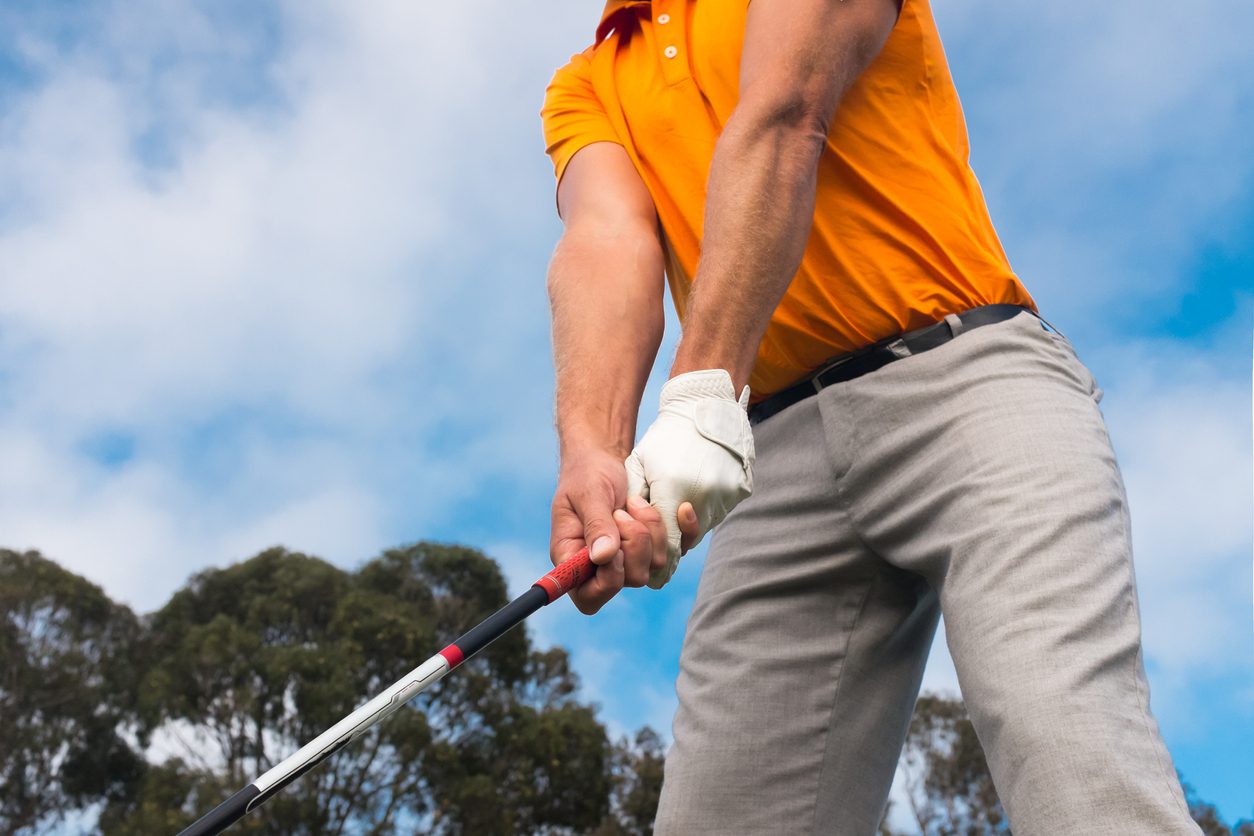How to grip a golf club in 5 easy steps

Knowing
how to grip a golf club is the most important element of the golf swing.
You
can trace many problem shots and faults back to how you hold the club. Is it
too strong? Maybe it’s the opposite. So, what makes a perfect golf grip?
Whilst
it’s true that there is such a thing as an orthodox golf grip, different types
of grip can be effective.
As
PGA professional Alistair Davies explains: “Compensations are going
on in your golf swing that make your grip work”.
For
example, players with a strong grip, which tends to encourage a hooky flight,
often make adjustments elsewhere in the swing that means they hit the ball
straight—in which case, Davies wouldn’t recommend making any tweaks.
However,
it sometimes helps to go back to basics—something even the pros will do from
time to time to ensure bad habits aren’t creeping in.
Here, Davies looks at how to grip a golf club in five easy steps.
1. Cradle your fingers to avoid a ‘palmy grip’
Let’s
start with the placement of the club in your lead hand. Where the golf grip
sits right in the middle of the hand, it’s known as a ‘palmy grip’—and,
according to Davies, it’s one of the biggest faults he witnesses amongst
amateurs.
“A
palmy grip can cause issues squaring up the clubface because it makes it harder
for your wrists to work,” he explains.
“It
can also cause the backswing to have a collapsed lead arm and a limp wrist
position. As a result, you will struggle to strike the ball consistently out of
the middle, and you’ll likely lose a lot of power.”
Look
to align the grip more in the fingers, so through the middle joint of the index
finger to the bottom joint of the little finger.
Try cradling your fingers and let the club sit in the cradle. Finally, you want the thumb to sit slightly to the trail side of the grip.
Related: 7 driving range tips to improve shot consistency
2. Check the ‘V’
If
you’re talking about a perfect golf grip—a neutral one, as opposed to strong or
weak—the ‘V’ created by the thumb and finger on your trail hand should point
somewhere between your chin and right shoulder.
This
is where you hear a lot about how many knuckles you should see, but it’s not an
exact science, as Davies explains.
“The
ideal number of knuckles you should see on the lead hand is two to three, but
it depends on the size of your hands. That’s why it’s more important to see
where that ‘V’ is pointing.”
If
you have a strong grip, the ‘V’ will point more towards your trail shoulder,
and you’ll see more knuckles on your lead hand.
Golfers with this grip will often hook the ball. With a weak grip, the ‘V’ points towards the lead side of the body, and you’ll see fewer knuckles on your lead hand. Such a grip will encourage more of a slice.
3. Check the placement of the trail Hand
Many
people get the centre of gravity in the trail hand too high, which means it
doesn’t align with the shaft.
When
you try and apply pressure above the shaft, you’re not getting any power, plus
you lose control and stability of the clubhead through impact.
If
that sounds complicated, make sure you watch Davies’ video here:
4. Mind The Gaps
Whether
you’re using an interlocking, overlapping or baseball grip, you don’t want gaps
between the little finger on your trail hand and your first finger on your lead
hand.
“Pockets of holes create the club’s movement, mostly between transition and impact,” says Davies. “It makes the clubhead twist a bit and gives you a lack of control of the clubhead through the ball.”
Related: How to play golf on a budget
5. Apply the right pressure
If
you’re talking about a scale where ten is very tight, Davies recommends
gripping the club at a five or six.
“It’s
like holding a child’s hand when you cross the road,” he explains. “You don’t
want them to slip out of your hand, but you don’t want to hurt them.”
Davies
says to think, ‘firm hands, loose wrists.’
“Your
hands are gripping the club, and you’re swinging between 70 and 90mph. You
don’t want the club to be moving around. At the same time, you don’t want
unwanted tension that goes into your arms and stops your arms flowing
properly.”
It’s also important to keep the pressure consistent. “If you swing the golf club thinking five or six, you’re not looking for it to increase or decrease. A decrease is just as bad as increasing.”
If you own a club or set of clubs, you may want to protect them against theft, damage and loss by getting specialist golf insurance.
At Golf Care, we arrange cover to
protect your clubs, bags and accessories against loss, theft, and damage. This
way, you can play golf without constantly worrying about your equipment.
You can find out more about how we can help here or get an instant online quote by clicking on the banner below.






